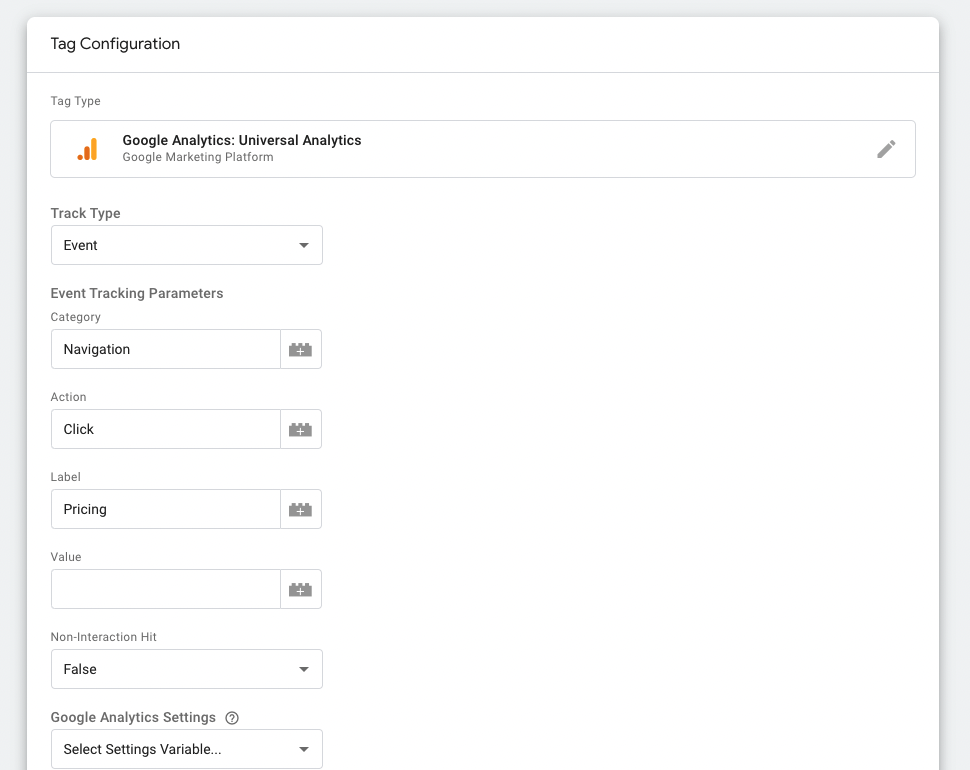Google Analytics Event Tracking Things To Know Before You Get This
Wiki Article
Getting The Google Analytics Event Tracking To Work
Table of ContentsGoogle Analytics Event Tracking Fundamentals ExplainedNot known Facts About Google Analytics Event TrackingAn Unbiased View of Google Analytics Event TrackingAn Unbiased View of Google Analytics Event TrackingSome Known Incorrect Statements About Google Analytics Event Tracking The Greatest Guide To Google Analytics Event Tracking

If you're mosting likely to establish up event tracking by hand, after that you're mosting likely to have to include some extra code to the components you wish to accumulate information from. The code you're going to deal with will look something like this: There are 4 elements within that code fragment that you're mosting likely to need to define yourself: occasion, Classification, event, Activity, occasion, Label and event, Worth.
As you can see, two of these are called for (group and action) while label and worth are optional. Everything depends on the type of information you desire passed on back to Google Analytics when an individual clicks on the defined element (Google Analytics Event Tracking). It will certainly be a lot simpler to define these components if you analyse your website and make a decision which elements/actions you want to track
What Does Google Analytics Event Tracking Do?
Currently, you'll be asked to define the and and you'll desire to pick from the drop-down food selection that shows up when you click on. This will raise the same event monitoring parts we checked out earlier, which you'll require to complete. When you've specified these, you can move to the 2nd box and pick the trigger that will certainly fire your tag.On the following display, you'll likewise have an area for naming your trigger and, if you click on the box, you'll see a checklist of the various triggers you can choose. In this instance, we wish to choose and after that choose the alternative listed below. You'll set the trigger to just terminate when an element is clicked with an URL that consists of the.
Easy - Event monitoring! Occasion tracking gives you a picture of exactly how users engage with your website and business. Check out on as we check out every little thing you need to know, including what it is, why you need to track events, exactly how to take care of events information, and other pertinent Frequently asked questions you may have.
Google Analytics Event Tracking Fundamentals Explained
You can switch over between your event groups, actions, and labels in the Leading Occasions report. This report is vital for digging additionally right into study on a certain occasion category. The Occasion Pages record displays the web pages where occasions are set off. In this section, we can check out the top pages that drive occasions.It reveals you the course they take as they relocate from one occasion to the next and helps you to figure out which material engages your audience one of the most. Events in Google Analytics have four major aspects. They are additionally a part of the occasion monitoring code. Google Analytics makes use of these codes to track individual communications and team them into occasion records.
A listing of the criteria you can track on your website is on the. After checking all essential fields, you can click "X" to close the window and return to the Summary food selection on the.
The 9-Second Trick For Google Analytics Event Tracking
If you have not done so, you may need to establish up a variable in the Google Analytics Settings box. After this, enter your GA tracking ID in the Monitoring ID area.
To do this, comply with the next collection of activities: After setting up the areas, pick the "Triggering" area. When configuring your new trigger, click the "+" switch, after that the "pencil" switch, after that pick your trigger kind.
The Of Google Analytics Event Tracking

When it familiarizes which areas and aspects are leading customers with your conversion funnel, you still won't know. Without occasion tracking, GA records will only count brows through as single-page sessions, also if users spend a great deal of time on one page and engage with it substantially (and a bounce).
Yet how does event monitoring accomplish this?Single-page sessions understood as bounces begin and wrap up on the same web page. Without event tracking, GA will classify an individual's visit as a bounce if they don't browse to an additional web page, no matter how they communicate with it. A video-rich page can this article have a greater bounce rate if occasions are not tracked.
Indicators on Google Analytics Event Tracking You Need To Know
However, for GA to take event hits right into account when measuring bounce rates, you should choose "Non-interaction occasion" as "False" during the GTM configuration. Establishing "occasion objectives" with occasion activity is a superb means to keep an eye on individual tasks you value highly, such as brand-new lead entries or clicks on a call to action.Report this wiki page